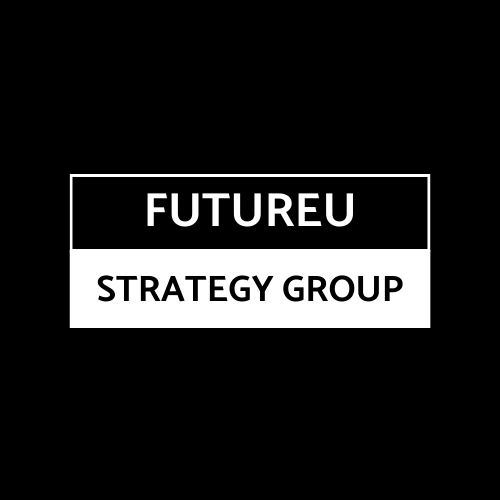Staffing & Operational Strategy for Fintechs in the UAE: Mainland vs DIFC vs ADGM
When scaling a fintech, payments, or digital financial services firm into the UAE, one of the foremost structural decisions is which jurisdiction to anchor your licensed entity and operations.
Mainland UAE (under CBUAE), DIFC (via DFSA), and ADGM (via FSRA) each have distinct regulatory, staffing, outsourcing, and compliance regimes.
The right choice can dramatically affect your cost base, operational agility, compliance burden, and growth potential.
This article offers a detailed, jurisdiction-agnostic (i.e. not specific to any origin country) guide to staffing considerations, outsourcing levers, residency constraints, regulatory sandboxing, and cross-border readiness across UAE fintech regimes.
Why Staffing and Structure Matter
Before diving into tables, let’s frame why staffing strategy is so fundamental:
- Regulator demands: Licensing authorities care not just about your model, but who runs it — your CEO, compliance leadership, IT oversight, etc.
- Cost leverage: Salaries, visas, and local offices are expensive; a lean staffing structure with outsourcing and remote flexibility can be a competitive moat.
- Credibility & control: Regulators expect that core functions (e.g. AML, risk, compliance) are tightly controlled and overseen.
- Scalability & jurisdictional arbitrage: As your business expands across markets, you want a structure that can flex — adding or removing staff in various locales without redoing your core governance.
In short: staffing isn’t just HR — it is a key piece of regulatory architecture and competitive design.
1. Core Staffing Requirements & Role Architecture
Below is a refined and extended breakdown of how staffing roles vary across the three regimes (Mainland, DIFC, ADGM):
| Role Category | Mainland UAE (CBUAE) | DIFC (DFSA) | ADGM (FSRA) |
|---|---|---|---|
| Mandatory, Key Roles | CEO / Managing DirectorCompliance OfficerMLRO (Money Laundering Reporting Officer)Finance or Chief Financial Officer (CFO)IT Security / Chief Information Security Officer (CISO)Local Sponsor or Local Director (if required under local ownership rules) | Senior Executive Officer (SEO)MLROCompliance Officer | SEOMLROCompliance Officer |
| Recommended / Optional Back Office & Support Roles | Operations staff (5–10, depending on transaction volume and business complexity)Risk Analysts, Fraud TeamCustomer Support / OperationsTechnical & DevOps support (if not fully outsourced) | Finance / Accounting OfficerIT Security Specialist / Cybersecurity LeadOperations / Support (2–5 full-time equivalents) | Similar to DIFC: Finance, IT Security, Operations staff (2–5) |
| Residency & Presence Requirements | Strict: CEO, Compliance Officer, MLRO, IT Security Officer must be UAE-based/resident | More flexible: Key roles can be non-resident with regulatory approval | Flexible: Non-resident key roles permitted with FSRA approval |
| Total Headcount Typical for Lean Operation | 5–10, of whom perhaps 50 %+ must be locally based | 2–5 core staff, minimal local presence | 2–5 core staff, minimal local presence |
Notes & Commentary
- Mainland regime places heavier weight on local presence, meaning founders or senior executives often must relocate or maintain UAE visas.
- In DIFC and ADGM, regulators recognize the global nature of fintech, allowing non-resident executives (post-approval), which enables distributed leadership across time zones.
- The SEO role in DIFC / ADGM is akin to a local executive who is accountable to the regulator; even if other functional heads are remote, the SEO acts as a compliance anchor.
2. Outsourcing Strategy: What You Can (and Can’t) Outsource
Outsourcing is a powerful lever to reduce fixed costs and flex staff as needed. But regulators also place guardrails — your core functions must remain under control and oversight.
| Function | Mainland (CBUAE) | DIFC (DFSA) | ADGM (FSRA) |
|---|---|---|---|
| Compliance / AML / KYC / FIU Reporting | Limited scope of outsourcing: core KYC onboarding, FIU reporting, suspicious transaction reporting must remain in-house under direct executive control | More permissive: non-core tasks (screening, automated KYC, transaction monitoring) may be outsourced. But MLRO or Compliance Officer must retain ultimate oversight | Similar flexibility: non-core compliance tasks outsourceable, but oversight retained by in-house compliance leadership |
| IT / Technology / Infrastructure | Outsourcing permitted, but providers must comply with UAE-based and CBUAE standards (e.g. PCI DSS, cybersecurity, local data residency if required) | Allowed to be outsourced to DFSA/DIFC-compliant providers, subject to strong SLAs, audits, and oversight | Allowed to ADGM-approved or compliant providers, with oversight, audits, certifications |
| Finance / Accounting / Audit | Partially outsourceable: bookkeeping, preparation of financial statements, audit work can be outsourced, while CFO oversight remains in-house | More liberal: full outsourcing to DFSA-approved accounting/audit providers is acceptable | Similarly, finance function outsourcing is permitted, provided oversight and governance checks are in place |
| Admin / HR / Back-Office | Fully outsourceable: HR, payroll, office operations, back-office management can be handled by local vendors | Fully outsourceable to DIFC-registered service providers | Fully outsourceable to ADGM-registered service providers |
Practical Tips for Outsourcing
- Vendor due diligence: Ensure outsourced vendors meet regulatory standards, data security, and have audit rights
- Clear delegation & oversight: Delegation matrices should show what is outsourced vs what is retained, with periodic reporting to in-house leadership
- Regulator communications: Disclose material outsourcing arrangements in your licensing application, and update as changes occur
- Contractual rights: Include termination, audit, security, and continuity clauses in third-party agreements (especially for compliance, IT, and data processing)
3. Residency, Visas, and Local Presence
One of the key differences between Mainland and free-zone (DIFC / ADGM) regimes is how strictly they require UAE residency for core personnel.
Mainland (CBUAE)
- Core role holders (CEO, MLRO, Compliance, IT Security) generally must be UAE residents (or at least locally based).
- Visa costs, relocation, housing, and travel logistics must be budgeted from the start.
- Local office presence is often required as part of the licensing and supervision regime.
DIFC / ADGM
- Non-resident appointments are permissible with regulator approval.
- This allows global founders to remain at headquarters while appointing local SEO / compliance liaisons.
- However, over time some local presence may still be needed for audits, inspections, or regulatory engagement.
Strategic Implication
If your leadership team is global, and you prefer to avoid relocation, DIFC and ADGM provide greater flexibility. They accommodate remote governance while maintaining regulatory credibility.
4. Regulatory Licensing, Sandbox & Innovation Pathways
Staffing strategy must align with the licensing model and level of regulatory engagement your fintech pursues.
Sandbox / Innovation Testing Licenses
- ADGM RegLab: Provides a controlled environment for fintechs to test products under relaxed rules before full licensing.
- DFSA Innovation Testing Licence (ITL): DIFC’s sandbox permits new financial services or business models to operate with limited regulatory burden before full authorization.
Why this matters to staffing:
During the sandbox phase, regulatory expectations around staffing may be more lenient — you may not be required to hire full-scale compliance or security staff initially. But you should plan to scale governance functions as you transition to full license.
Full Licensing & Capital Regimes
- In DIFC, fintechs offering payments, investment advice, lending, etc. often require Category 3 or 4 licenses, with capital and compliance thresholds.
- CBUAE (Mainland) regulates payment services under national frameworks, and fintechs must comply with the Retail Payment Services Regulation and Large-Value Payment Systems Regulation.
- ADGM’s fintech regime is governed by its Rulebook and guidance, requiring governance, fit-and-proper criteria, and stable systems.
Your staffing plan must anticipate transitioning from a minimal-team sandbox to a fully compliant operation.
5. Deep Dive: Key Staffing Functions & Best Practices
Below is a more detailed look at each critical role, plus considerations for scaling.
CEO / Head of Business (Managing Director)
- Role: Strategic leadership, regulatory interface, board oversight.
- Qualities: Credibility with regulators, fintech domain experience, ability to lead compliance culture.
- Residency: In Mainland, must be local / resident; in DIFC/ADGM, may be remote but should regularly engage locally.
Compliance Officer & MLRO
- Role: Establish and maintain AML/CFT programs, internal policies, liaison with regulators, reporting.
- Outsourcing constraints: Core tasks such as suspicious transaction reporting and MLRO decisions cannot be fully outsourced.
- Span of control: Should have direct reporting to the board or audit committee.
- Scalability: As you grow, compliance may subdivide into AML, transaction monitoring, sanctions screening, etc.
IT Security / CISO
- Role: Manage cybersecurity, data protection, third-party audits, incident response.
- Outsourcing fit: Tech infrastructure and cloud may be outsourced, but oversight, security architecture, and breach response must be in-house.
- Certifications & audits: You may need external audit / penetration testing and periodic compliance (e.g. PCI DSS, ISO27001).
Finance / CFO / Accounting Officer
- Role: Budgeting, financial controls, audit liaisons, capital management.
- Outsourcing: Bookkeeping, routine accounting, tax filings, audit prep are candidates for outsourcing.
- Governance: CFO must review and sign off financial reports; should maintain internal controls.
Operations / Back-Office, Customer Support
- Role: Transaction processing, support services, issuing refunds, reconciliations.
- Staffing model: Initially small; can scale or outsource depending on volume.
- Geographic flexibility: You may place these teams in lower-cost geographies, with oversight in UAE.
Risk, Fraud & Analytics
- Role: Monitor threats, detect anomalies, manage fraud rules.
- Startup phase: May be handled by compliance or operations, but plan to specialize as volume grows.
6. Cross-Border Payment Flows & Compliance Implications
Because most modern fintechs operate across borders, your staffing must align with cross-jurisdictional compliance demands.
Payment Network Integration
- Mainland: Strong integration with UAE domestic rails (UAEFTS, WPS).
- DIFC / ADGM: More emphasis on global rails (SWIFT, SEPA, ISO 20022, cross-border settlement).
Your IT & operations teams must be familiar with these rails and conversion flows.
AML / CFT Risk and Correspondent Banking
- Mainland regimes may take a stricter view on high-risk corridors, requiring deeper KYC and real-time monitoring.
- DIFC / ADGM tend to allow more flexible risk-based approaches, depending on jurisdictions you serve.
This impacts staffing for screening, transaction monitoring, and compliance oversight.
Data Localization & Privacy
- Some jurisdictions may mandate data residency or local record-keeping.
- Your IT architecture must conform to those requirements, with staff or vendor oversight accordingly.
7. Transitioning From Startup to Scale: Staffing Roadmap
Here’s a sample phased staffing roadmap for a fintech entering UAE, across jurisdictions:
- Sandbox / concept stage (0–6 months):
- SEO / minimal executive presence
- Compliance / MLRO as advisory or part-time
- Outsource infrastructure / core tech
- Minimal finance, operations overhead
- Pre-authorization build (6–12 months):
- Hire or assign full-time Compliance Officer, MLRO
- Bring IT security oversight in-house
- Begin internal control structuring, vendor contracts
- Finance oversight to be in-house, outsource supporting tasks
- Post-authorization / growth (12+ months):
- Expand operations / customer support team
- Create specialist fraud, risk, analytics teams
- Possibly regional operational hubs
- In-house audit, internal control function
- Maturity & scale:
- Full department structures (compliance, risk, IT, operations, finance)
- Continuous hiring, training, and rotation to maintain regulatory preparedness
At each stage, your outsourcing boundary shifts inward; early on, you lean heavily on third-party providers, but core risk & compliance eventually must be internal.
8. Cost & Overhead Impact
While actual salary estimates depend on locality and seniority, the staffing regime directly feeds into your fixed overhead. Some observations:
- Visa & relocation costs are material: for Mainland setups, you may need to budget tens of thousands USD per senior hire in relocation, housing, schooling, etc.
- Office and infrastructure costs: local offices, secure data rooms, compliance spaces.
- Training & compliance upkeep: licensing audits, mandatory training, cybersecurity audits, external reviews.
- Attrition & talent risk: compliance and risk talent are in demand globally — retention is important.
Hence, lean staffing with regulated outsourcing helps reduce burn and increases runway.
9. Jurisdiction Comparison Revisited — With Depth
Let’s revisit the comparison with more nuance and hyperlinks to key regulatory sources:
| Dimension | Mainland (CBUAE) | DIFC (DFSA) | ADGM (FSRA) |
|---|---|---|---|
| Regulatory Authority | Central Bank of the UAE (federal) via payment regulations | DFSA under DIFC legal regime | FSRA under ADGM legal regime |
| Licensing Regime | Payment Services under CBUAE, with national payment systems integration | “Providing Money Services” license categories, regulated fintech regimes, DFSA rulebooks | ADGM FinTech Rulebook, FSRA authorization processes, fit & proper requirements |
| Sandbox / Innovation Paths | Less developed (main CBUAE sandbox not as mature) | Innovation Testing Licence (ITL) sandbox model | RegLab sandbox with graduated approach |
| Ownership / Local Sponsor | May need local sponsor or local ownership depending on entity structure | Free zone, no local sponsor required | Free zone, no local sponsor required |
| Residency for Key Roles | Strict local presence required | Flexible non-resident options (pending approval) | Flexible non-resident options (pending approval) |
| Outsourcing Flexibility | More restricted, especially for compliance core tasks | Extensive outsourcing permitted with oversight | Extensive outsourcing permitted with oversight |
| Best Use Cases | Fintechs targeting UAE domestic markets, AED transactions, banking integration | Regional / international fintechs, digital payments, wealthtech | Global PSPs, cross-border lenders, digital banks targeting MENA & beyond |
| Complexity & Cost | Higher fixed cost due to local hire, visas, offices | Moderate — some local presence, but flexible structure | Moderate to lower — leaner staffing, easier remote governance |
10. Strategic Recommendations (Extended)
A. For Global / Cross-Border Fintechs
- Choose DIFC or ADGM: They align with global capital, investor confidence, and cross-border flexibility.
- Start with sandbox / pilot: Enter via ITL or RegLab to prove product-market fit before full staffing ramp.
- Lean core team: Retain only essential leadership in UAE; outsource supporting roles.
B. For UAE-Focused & Branch Use Cases
- Mainland incorporation is necessary: Especially if you must integrate with local payment rails or serve exclusively UAE clients.
- Balance cost with control: Use outsourcing where permitted, but accept heavier fixed overhead.
C. For Early-Stage / Pre-Product Startups
- Use ADGM (or DIFC) sandbox regimes to reduce capital and staffing burden.
- Hire minimal full-time team initially, outsource heavily.
- Budget for ramping staffing as you scale or obtain full license.
D. For Payment Service Providers or PSPs
- Ensure your staffing plan supports real-time transaction monitoring, KYC, fraud detection, and settlement functions.
- Your compliance, IT security, and operations teams must be able to scale with volume surges.
E. For Funded Fintechs or Scaling Entities
- Invest early in compliance infrastructure and audit capabilities
- Build redundancy in key roles (backups, deputies) to maintain continuity in case of turnover
- Monitor attrition, especially in risk, compliance, and data roles — these are key retention areas.
11. Tips for Implementation & Execution
- Organizational Chart Planning. Draft a 3-year staffing org chart before licensing: map roles, reporting lines, and escalation paths.
- Hire for “scale potential”. Early hires should be comfortable operating under regulation and building teams later.
- Vendor and service provider frameworks. Before signing on outsourcing partners, ensure their compliance certifications, audit rights, and ability to integrate with your governance model.
- Training & Continuous Learning. Regulatory updates evolve quickly; invest in ongoing training, certifications — compliance should be a continuous process, not a one-off.
- Engage regulators early, clarify expectations. In your licensing application, outline your staffing plan, escalation processes, and oversight framework. This builds trust.
- Use metrics & dashboards. Track SLA performance of outsourced vendors, compliance violation rates, transaction monitoring effectiveness, etc.
- Plan for redundancy & backups . No single point of failure; every critical function should have a backup or alternate.
12. FAQ (for SEO & Reader Clarity)
Q: Can I run a fintech in UAE without having local staff?
A: Yes, in DIFC and ADGM, non-resident appointments are allowed upon regulator approval. But some local presence may still be needed for audits or inspections.
Q: Which functions must remain in-house?
A: Core compliance, MLRO decisions, security architecture, key audits, and governance cannot be fully delegated or outsourced.
Q: What is the minimum staff needed to license in DIFC or ADGM?
A: In many cases, as few as 2–3 core staff can satisfy early licensing requirements (SEO, MLRO, Compliance Officer), supplemented by outsourced support.
Q: When should I transition from outsourcing to in-house staff?
A: As transaction volume, regulatory scrutiny, or complexity increases. Usually within 1–2 years post authorisation.
Q: Can back-office operations be offshore?
A: Yes — operations teams, support, and routine tasks can often be located in lower-cost geographies under strict oversight.
Q: Does Mainland UAE require more staff than DIFC/ADGM?
A: Yes — Mainland regimes generally demand more local staff and stricter residency for control roles.
External Reference Links — UAE Fintech Licensing & Regulation
Regulatory Authorities & Rulebooks
- Central Bank of the UAE (CBUAE) — Payment Systems (official)
- Dubai Financial Services Authority (DFSA) — Homepage
- DFSA — Rulebook & Legislation
- ADGM (FSRA) — FinTech Rulebook & Reglab Overview
Government & Sandbox Information
- UAE Government — Regulatory Sandboxes
- ADGM — RegLab (FinTech Sandbox)
- DFSA — Innovation Testing Licence & Sandbox
Industry & Legal References
- The Legal 500 — UAE Banking & Fintech Guide
- Aston Advisory — DIFC Regulated Fintech Licence Explained
- PwC Middle East — Fintech & Payments
Standards & Compliance
Ecosystem & Further Reading



